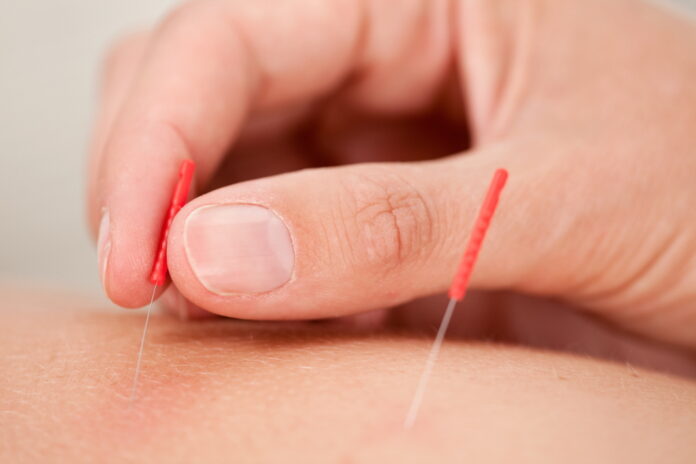American-Korean Research Team Confirmed and Reported
By Namwook Cho L.Ac.
A joint research team from Korea and the Harvard Medical School confirmed that acupuncture treatments reduce chronic lower back pain by observing physical changes in the brain and nerve structure in the lower back.
Acupuncture treatment was performed using GV3, BL23, BL40, K3, and 2~3 additional acupuncture points where the patients complain of pain as ashi points. The research team rendered a total of 6 sessions in 4 weeks. Then, the research team tested sensitivity, tactile acuity after each session ends.
Improvements were reported by 18.5% in tactile acuity over the back following verum acupuncture; in contrast, the control group’s tactile acuity increased by 4.9%.
The team also performed an MRI test to see whether acupuncture treatments affect any structural changes in the lower back and confirmed that the quantity of grey matter had been reduced.
The research team observed 78 chronic lower back pain patients, and 18 were had actual acupuncture treatments (with verum acupuncture needles). A total of 60 people were in the control group.
Acupuncture Treatment Result Now Can Be Analyzed Quantitatively For cLBP Patients.
Comparing Tactile acuity and Changes in grey matter in the brain Make Possible to Measure Treatment Effect.
Many know that acupuncture treatment is beneficial for lowering pain in chronic lower back pain. Also, there have been many studies that tried to prove the efficacy of acupuncture treatment.
But not many western scientists do not believe in the efficacy of the treatment because acupuncture treatment results have not been analyzed quantitatively.
Recently, a Harvard Medical School team and Korean acupuncturists researched how to measure the treatment effects for chronic lower back patients by observing physical changes in the brain through MRI.
A joint research team from Korea and the Harvard Medical School confirmed that acupuncture treatments effectively reduce chronic lower back pain by physical changes in the brain and nerve structure in the lower back.
The research team observed 78 chronic lower back pain patients, and 18 were had actual acupuncture treatments (with verum acupuncture needles). A total of 60 people in the control group were divided into two more sub-groups: one treated with sham acupuncture needles and the other not treated with a real or sham acupuncture needle.
Acupuncture treatment was performed using GV3, BL23, BL40, K3, and 2~3 additional acupuncture points where the patients complain of pain as ashi points. The research team rendered a total of 6 sessions in 4 weeks. Then, the research team tested sensitivity, tactile acuity after each session ends.
Tactile acuity is the ability to resolve fine spatial details with the perception of touch. Previous studies showed that sensory discrimination learning or repetitive sensory stimuli could improve tactile perception, which subsequently could reduce low back and limb pain. Disruption of tactile acuity closely link with chronic pain and thus be a target for non-pharmacological, somatically-directed interventions. Improvements by 18.5% in tactile acuity over the back following verum acupuncture were associated with reduced S1-back gray matter volume and increased. In contrast, the control group’s tactile acuity increased by 4.9%.
The team also performed an MRI test to see whether acupuncture treatments affect any structural changes in the lower back and confirmed that the quantity of grey matter had been reduced as a patient feels less sensitivity and more pain, the total volume of gray matter, which controls the lower back, increases in the brain.
Two groups of the research team were led by Dr. Vitaly Meadow, Harvard Medical School, Charlestown, MA, and Hyungjun Kim, Division of Clinical Medicine, Korea Institute of Oriental Medicine, Daejeon, respectively.
The research title is “Reduced tactile acuity in chronic low back pain is linked with structural neuroplasticity in primary somatosensory cortex and is modulated by acupuncture therapy.” And the research result was published in NeuroImage on the 15th of August, 2021.





































